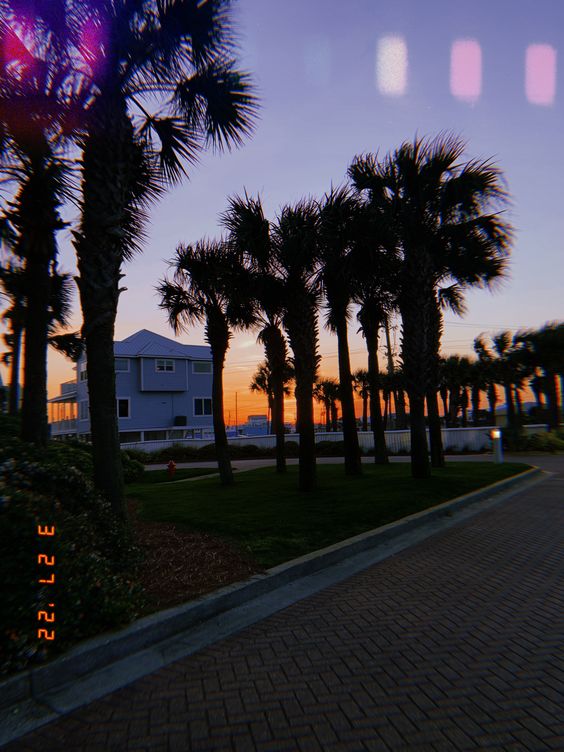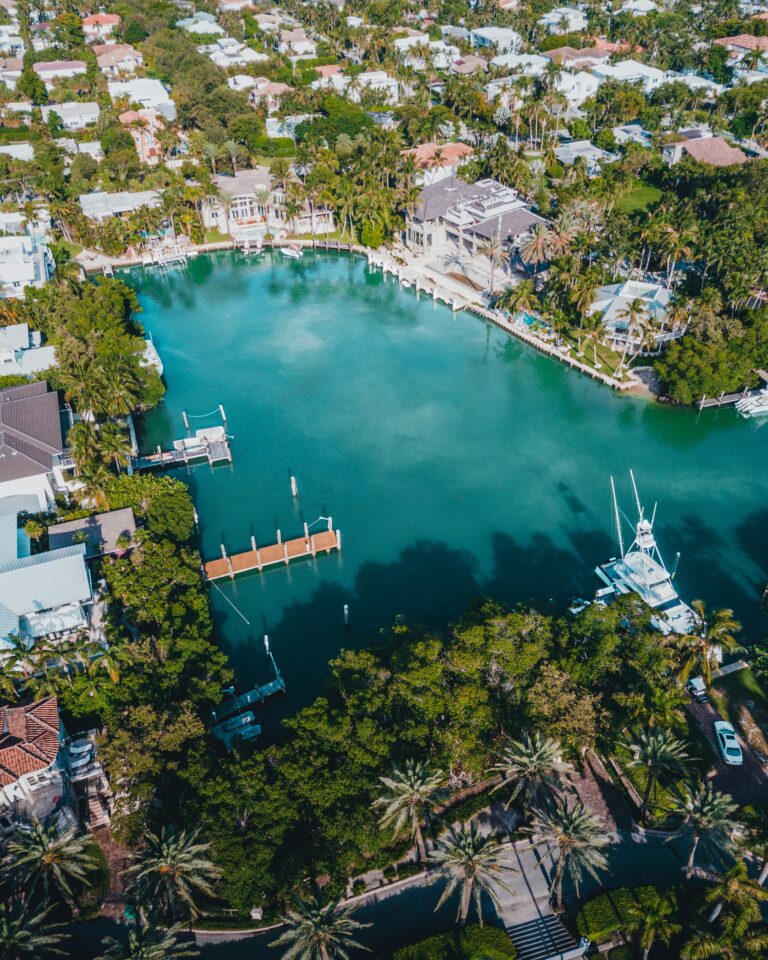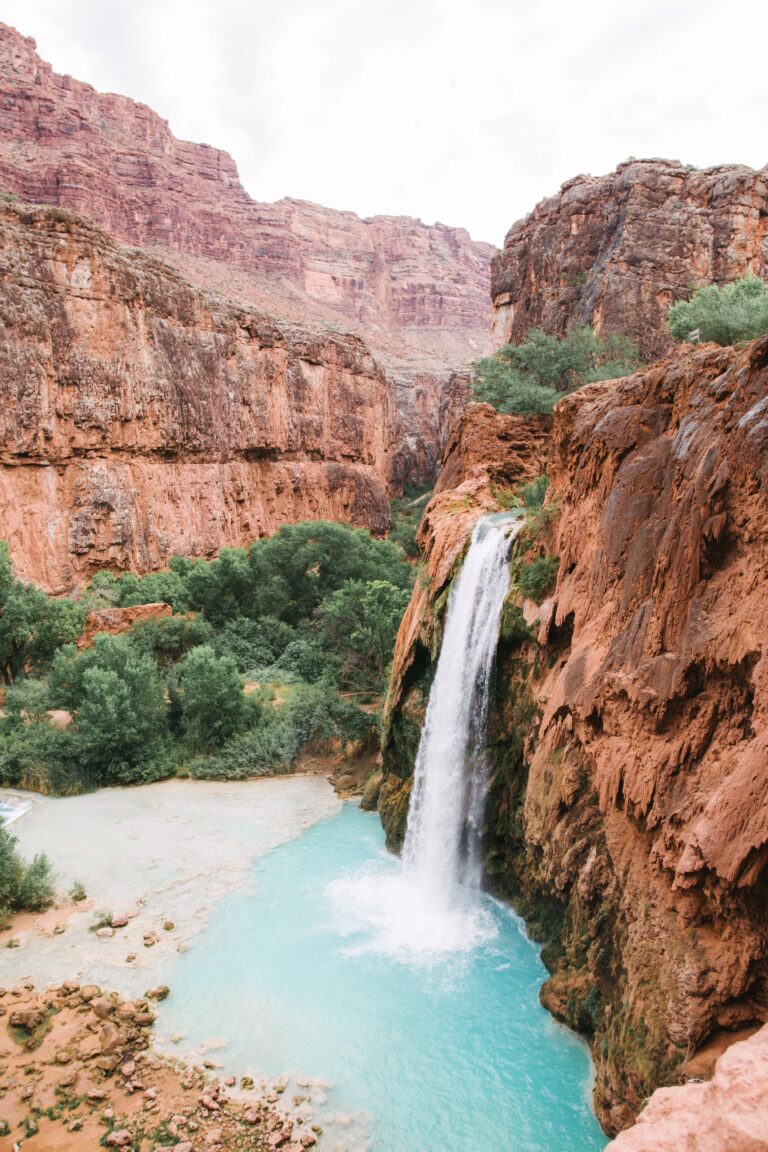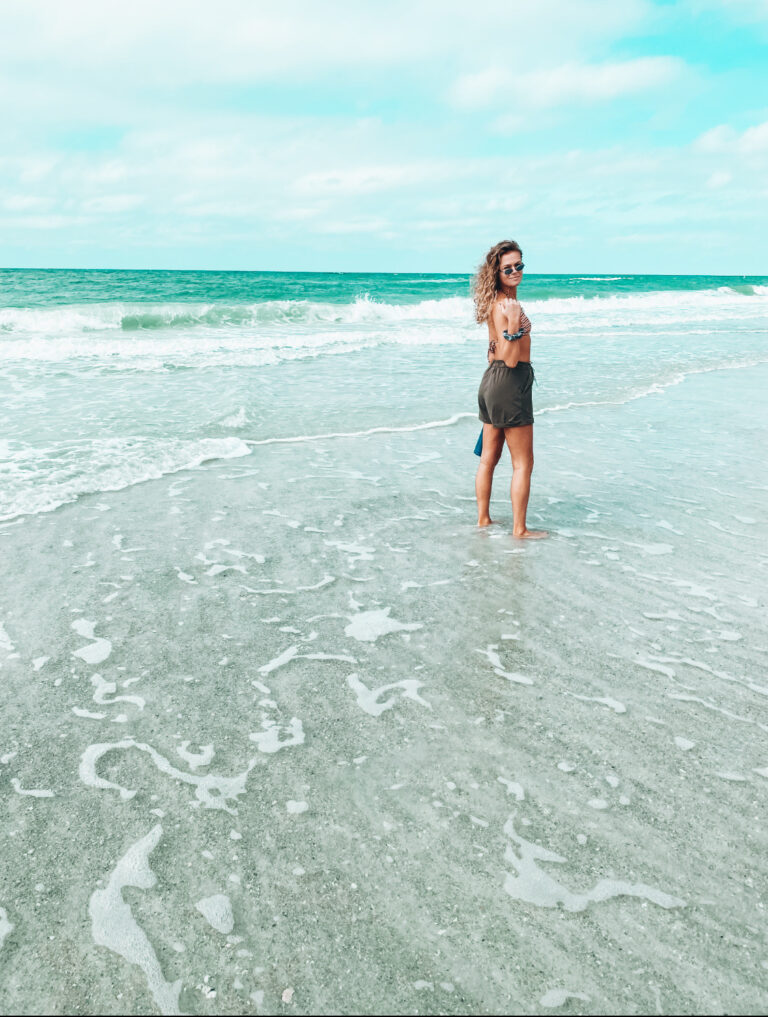8 Breathtaking National Parks In Alaska To Visit
Alaska is home to the most magnificent national parks globally. And some of them are massive: if Alaska’s National Parks formed a state, it would be the 14th biggest state in the country, ahead of Utah.
Alaska’s national parks contain some of the most spectacular natural beauty featuring gigantic glaciers, jaw-dropping mountain ranges, vast herds of caribou, grizzly bears, bald eagles, wild salmon, etc.
There are 17 national parks in this Alaska and hundreds of smaller National Park Service locations, monuments, and state parks. With so much to select from, it’s easy to feel overwhelmed. Even for the most experienced explorer, finding out where to go, what to do, when to do it, and how might seem like a lot.
But don’t worry: we’ve provided you with a list of Alaska’s most beautiful national parks, with various activities to do in each one and all the information you’ll need. Some of these are the most popular while others are our favorites!
8. Kenai Fjords National Park
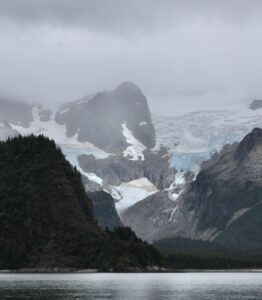
Kenai Fjords National Park, outside of Seward, was established in 1980 to safeguard some of Alaska’s most magnificent and inaccessible nature.
Snow and ice dominate 60% of the park, with the huge 936-square-mile Harding Icefield bordering the park’s perimeter. Countless tidewater glaciers stream down from the enormous icefield, creating valleys that fill with saltwater to produce magnificent fjords. The water views are incredible!
The Exit Glacier, the Harding Icefield, and the shoreline are the three primary regions of Kenai Fjords National Park. The park’s most accessible portion is Exit Glacier, a half-mile-wide river of ice. The 700-square-mile Harding Icefield is one of the few remaining icefields in the United States, and it’s also the country’s largest.
You can find beautiful tidewater glaciers and abundant marine life throughout the park’s rocky coastline.
How To Get There
Seward is 130 miles south of Anchorage, and you can access it year-round through the Seward Highway or during the summer months by the Alaska Railroad.
From the Exit Glacier region in Seward, travelers can enter the park by tour boats, water taxis, air taxis, and foot. Seward is also a popular stop for cruise ships.
What To Do
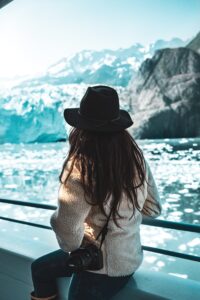
Take a Hike on the Harding Ice Fields Trail: In Kenai Fjords National Park, the Harding Ice Fields Trail is the most popular hiking route. Over 4000 feet of elevation rise makes this 8-mile round-trip climb a challenge.
Explore Exit Glacier: Alternatively, you can go up to exit Glacier, which is a straightforward climb but still provides stunning views of a natural glacier from the comfort of your camp.
Take a Ferry Ride: Take a day to see the park in the best manner possible: by ship! This is ideal for viewing the park since you cover a lot of land and get up close to some fantastic species and scenery.
Paddle a Kayak: Water taxis and guided tours from Seward are available for kayaking in Resurrection Bay.
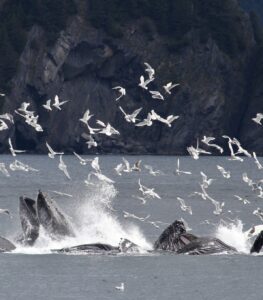
Wildlife Viewing: A varied range of flora and fauna call the craggy coastline and magnificent fjords home. Black and brown bears, mountain goats, lynx, porcupines, moose, wolverines, and marmots are among the land animals found in the region. Orcas, gray whales, humpback whales, minke whales, fin whales, Dall’s porpoises, sea otters, Steller sea lions, and harbor seals make their homes in the nutrient-rich glacial waters.
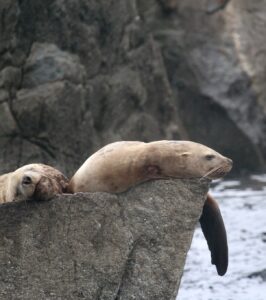
The park also provides a haven for migratory and resident birds. Puffins, common murres, cormorants, kittiwakes, pigeon guillemots, and eagles are among the over 190 species present in the region.
Where To Stay
Exit Glacier Campground: Only one developed campsite is available near Exit Glacier in Kenai Fjords National Park. This campground offers 12 walk-in tent-only sites on a first-come, first-served basis.
Backcountry Camping: Most people who camp in the Kenai Fjords’ backcountry choose to kayak down the shore.
There are various backcountry choices to consider (even on the Harding icefield). Anyone traveling into the woods should be highly cautious of bears and consider hiring a guide.
Holgate Cabin and Ailiak Cabin are two public-use cottages in Kenai Fjords National Park that you can reserve during the summer and are only accessible by boat.
When the Exit Glacier road shuts for the winter, another cabin, the Willow Cabin, becomes accessible for public use.
The Kenai Fjords Glacier Lodge is the only lodge on the Kenai Fjords Coast. You can only access it by boat. Alternatively, you can find various lodges and hotels in the Seward.
When To Visit
Summer is the most incredible season to explore Kenai Fjords National Park since the days are longer. Temperatures in the summer vary from 40 to 70 degrees Fahrenheit.
Exit Glacier’s road typically opens in May and shuts when the first snow falls (around October). However, the park itself is open year round.
For the most excellent possibilities of clear days, we recommend July and August. There’s just so much to see at this Alaska national park in the summer!
7. Wrangell-St Elias National Park
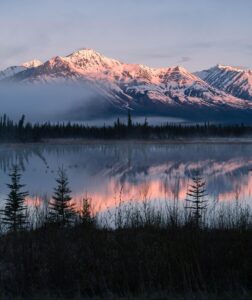
With its towering peaks and enormous glaciers, Wrangell-St Elias National Park is the most extensive and most magnificent unit of the United States National Park System. Wrangell-St. Elias spans from Mount St Elias (18,008 feet), one of North America’s highest peaks, to the Gulf of Alaska’s ocean.
The Chugach, Wrangell, and St. Elias Mountain Ranges meet in a region the size of six Yellowstone National Parks, earning it the nickname “the mountain kingdom of North America.”
The Copper Center Visitor Center, located near the hamlet of Copper Center at Mile 106 of the Richardson Highway, is the park’s primary visitor center. A theater, natural history displays, a bookshop, and a giant interactive map display are all available at the center.
The Ahtna Cultural Center, located next to the tourist center, has exhibits, a museum, and information on the Ahtna Athabascan people. A short nature walk outside the visitor center leads to stunning views of the Wrangell Mountains.
How To Get There
The Copper Center Visitor Center is 190 miles on the Glenn Highway from Anchorage, 250 miles from Fairbanks, and 110 miles on the Richardson Highway from Valdez.
This vast park is only accessible through two dirt roads. The 42-mile Nabesna Road connects to the park’s northernmost point, while the 60-mile McCarthy Road leads straight into the park’s core. Air taxis and flightseeing tours into the park are available from Glennallen, McCarthy, and Chitina airstrips.
What To Do
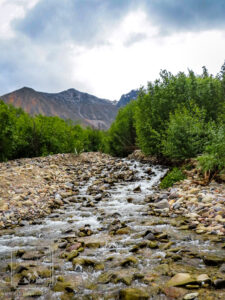
Discover the Kennecott Mine: Wrangell St. Elias National Park is famous for its old Kennecott Mine, shown prominently in many of the park’s photographs.
Make Your Way Up the Root Glacier Trail: The Root Glacier can be found just beyond the Kennecott Mine. We highly recommend taking the picturesque route to and from the Glacier!
Drive the Nabesna Roador or McCarthy Road: We strongly suggest driving down one or both of the park’s roads if you have the appropriate (4WD) vehicle. There are few other people, so there is plenty of wildlife, camping, beauty, and hiking in private.
Embark on a Beautiful Flight: Flying above the park is ideal for experiencing its splendor and making the most of your stay there. Wrangell’s flightseeing is spectacular, though not super affordable.
Wildlife Viewing: Wrangell-St. Elias National Park is home to a diverse range of wildlife, including Dall sheep and mountain goats in the alpine, caribou in the Wrangell Mountains to the north, and moose in the bogs and brushy parts of the lowlands.
The park is also home to both brown and black bears. Bison herds were released in the Copper River Valley in 1950 and along the Chitina River in 1962, and remnants of both herds can still be seen today.
Where To Stay
McCarthy Road and Nabesna Road are two sites in Wrangell St. Elias that provide many camping opportunities. Along these routes are various roadside camping spots that offer picnic tables and pit or vault toilets.
Wrangell St. Elias National Park also offers a variety of backwood camping possibilities. Even wilderness lodges are available! Visit the park service’s backcountry website for more information about backcountry camping.
The picturesque Kennecott Glacier Lodge, situated inside the park overlooking the Root Glacier, is highly recommended. Ma Johnson’s Historic Hotel, Currant Ridge, Blackburn Cabins, and Kennecott River Lodge are a few more places to stay in and surrounding McCarthy.
When To Visit
The most fantastic time visiting Wrangell-St Elias National Park in Alaska is from June through August, when temperatures are pretty cold, but there is minimal rainfall. In Wrangell-St. Elias National Park’s highest average temperature is 13°C in July, and the lowest is -10°C in December.
If you want to visit in May/June, keep in mind the passes may still be snowy. By September, it’s normal to have freezing temperatures at night. I definitely suggest that you take advantage of the short summer window!
6. Gates of The Arctic National Park
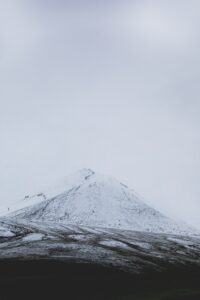
The Arctic Divide of the Brooks Range, America’s northernmost series of mountains, is crossed by the Gates of the Arctic National Park. It stretches from the Brooks Range’s southern foothills, past its craggy peaks, and onto the North Slope.
Gates of the Arctic National Park, which stretches 13,238 square miles and is north of the Arctic Circle, is only second in size to Wrangell-St. Elias National Park.
In its most basic form, the Gates of the Arctic is an immense wilderness the size of Switzerland with no National Park Service services, visitor centers, or campsites. The park is devoid of highways, except the Dalton Highway (renowned for its portrayal in Ice Road Truckers), and has just one hamlet, which is the Anaktuvuk Pass. Eight other Alaska Native settlements dot the outskirts, although each has less than 400 permanent people.
This is certainly one of the most rural national parks in Alaska!
How To Get There
Most travelers fly from Fairbanks to Anaktuvuk Pass, Bettles, or Coldfoot on a scheduled or charter flight. Bettles and Coldfoot provide bush charters into the park’s limits.
The Dalton Highway, which is accessible all year, is just 5 miles from the park, and some travelers choose to trek in from there, usually starting in Wiseman or Coldfoot.
What To Do
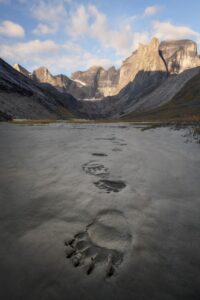
Wilderness Adventure: The Gates of the Arctic is one of the world’s few actually wild regions. You can travel through broad valleys and gaunt mountains of austere beauty on an adventure, exploration, and solitude excursion and see intact ecosystems where people have lived with the land for thousands of years.
Explore the Brooks Range: The Brooks Range’s isolated location, harsh climate, and terrain require visitors to have the knowledge and abilities to be genuinely self-sufficient. Those who visit will discover several chances for leisure, natural calm, isolation, and wilderness pleasure, but make sure you know what you’re doing/what time of year to go.
Backcountry Camping: Backpackers have access to 8.4 million acres of magnificent wilderness where they may roam at their leisure. You can find camping areas around lakes and gravel bars surrounded by breathtaking natural beauty. There are many rivers to float, including six classified as Wild Rivers.
Flightseeing: You can have flightseeing tours, day outings, and overnight camp-outs in distant areas via local air taxis. Visitors can also take air taxis to the nearby Kobuk Valley National Park to explore the dunes or the Noatak Preserve. The Bettles Visitor Center at Gates of the Arctic National Park and Preserve and the Arctic Interagency Visitor Center in Coldfoot are where visitors may receive their National Park Service passport stamps for those places.
Wildlife Viewing: Grizzly bears, wolves, Dall sheep, moose, and wolverines can all be found in the park and preserve. The park’s sole paths are those created by the Western Arctic caribou herd, one of Alaska’s most prominent, with over 200,000 animals. Grayling and Arctic char fishing are excellent in the clear streams, while lake trout fishing is excellent in the more significant, deeper lakes.
Where To Stay
Gates of The Arctic National Park isn’t the place for you if you’re searching for a lodge or an established campsite. Campgrounds and hotels in Gates of the Arctic aren’t a thing; there are no pre-existing facilities.
The only option is to camp in the wilderness.
When To Visit
Summer is the best time of year to explore Lake Clark National Park. The months of July and August provide the highest chances of seeing clear skies. Regardless of the weather prediction, rain is almost sure to fall throughout your getaway.
5. Glacier Bay National Park
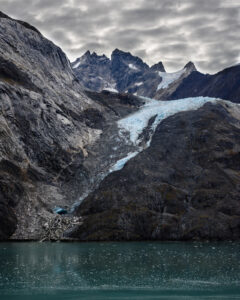
Glacier Bay National Park is one of Alaska’s most magnificent locations with lofty mountain peaks, ice-sculpted fjords, various marine animals, and large tidewater glaciers. Every cruise ship passing through the Inside Passage must stop at the 3.3 million-acre park for a reason.
Glaciers still cover around a quarter of the park today. More than 50 glaciers have been named, with seven active tidewater glaciers that calve icebergs into the sea. The Fairweather Range, at 15,000 feet, encircles the park to the west, making it the world’s highest coastal mountain.
How To Get There
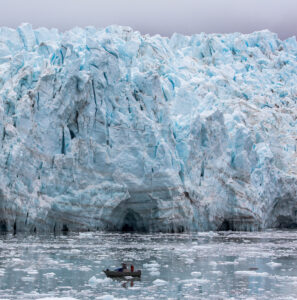
Most Glacier Bay National Park and Preserve tourists come by cruise ship and do not disembark during their stay. By plane or passenger ferry, you can reach the adjacent town of Gustavus. Alaska Airlines flies from Seattle and Anchorage to Juneau daily, connecting to Gustavus via various carriers.
Several air taxi firms fly small planes to Gustavus all year from several locations in southeast Alaska. The park headquarters at Bartlett Cove is 10 miles from Gustavus airport. A passenger ferry connects Juneau to Gustavus/Bartlett Cove on a restricted timetable.
This is one of the more difficult national parks in Alaska to actually get to, but trust me: the views are worth it.
What To Do
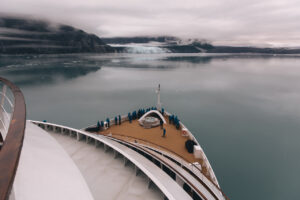
Boat Tour: Glacier Bay National Park in Alaska is best seen by boat. While the trip might be pricey, it’s well worth it if you have the funds.
Kayaking: You can find some of the best kayaking in the world at Glacier Bay, which is surrounded by gigantic glaciers and magnificent coastline scenery.
Hiking: Glacier Bay’s Bartlett Cove has multiple routes with boardwalks along the shore, making it the most popular place to trek in the region.
Wildlife Viewing: Glacier Bay is home to humpback whales, orcas, Stellar sea lions, harbor seals, sea otters, and porpoises, which make up almost one-fifth of the park’s marine waters. Glacier Bay is also home to a significant bear population, both brown and black, and the blue glacier bear, a unique color phase of the black bear. The park is also home to wolves, moose, mountain goats, Sitka blacktail deer, and bald eagles.
Where To Stay
Glacier Bay National Park has only one developed campground, Bartlett Cove. Visitors must get a free permit from the ranger station to camp in this area.
Glacier Bay is a popular destination for kayak-based backcountry camping. It’s one of the more rural national parks in Alaska.
Campers must first complete a park service-required backcountry camping orientation and permit application.
The Glacier Bay Lodge is an excellent choice for your accommodation. Glacier Bay Country Inn and Bear Track Inn are two more accommodation alternatives in Gustavus.
When To Visit
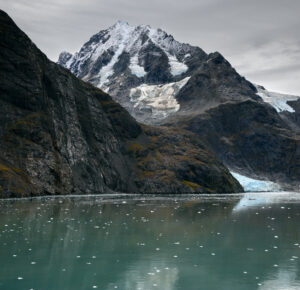
Summer is the perfect time to explore Glacier Bay National Park. If you want the highest possibility of rain-free days, we recommend July and August as the ideal months, like most other Alaska national parks.
Regardless of the weather prediction, the rain will fall throughout your vacation, and there will be a lot of it, so bring your rain gear!
4. Katmai National Park
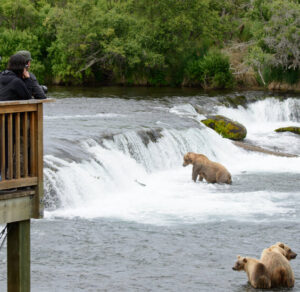
Katmai National Park is a real wilderness destination located about 260 miles southwest of Anchorage. The park is home to over 2,200 brown bears, many of which cluster on the Brooks River to feast on summer salmon runs, making it one of Alaska’s most fabulous bear-watching places.
Some visitors come for the valley of 10,000 Smokes’ unearthly volcanic environment, but most come for the bears. This is one of the best national parks in Alaska to see wildlife up close and personal!
How to Get There
The park is accessible all year, although concessioner services are only available from June to mid-September at Brooks Camp, the park’s central entrance point.
Brooks Camp, 30 miles distant, is only accessible by tiny floatplane and can only be accessed by commercial airplane from Anchorage. From Kodiak, Homer, and Anchorage, bear-watching tour packages, including one-day trips, are available.
What To Do
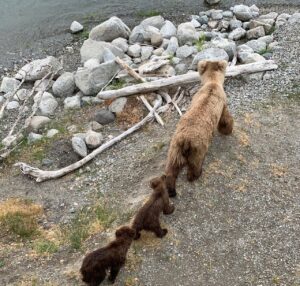
Bear Watching at Brooks Falls: Brooks Falls is home to the world-famous Katmai National Park bear cam. Once you arrive, you can enjoy the most extraordinary bear watching on the globe from a protected platform.
Fishing: Because the Brooks River is home to world-class fish, bears assemble in such large numbers near Brooks Falls. You will have a world-class fishing experience at this location alongside some furry friends.
Observe the Valley of 10,000 Smokes: Volcanic vistas of Katmai National Park include the Valley of 10,000 Smokes, possibly the most renowned and stunning. From Brooks Camp, you can take a bus excursion to this breathtaking valley. This is one of the coolest national parks in Alaska to see volcanos.
Flightseeing Katmai National Park: The best way to appreciate Katmai National Park’s magnificent volcanic terrain is to fly above it. The trip has an hour of flying time to enjoy the superb view of the park.
Where To Stay
At Katmai National Park, Brooks Camp is the only established campsite. You’ll need to take a little aircraft ride to get to the campsite.
Instead of defined campsites, the campground has a 60-person capacity quickly booked through recreation.gov.
The Brooks Lodge, situated near Brooks Falls, a well-known spot for observing bears, comes highly recommended.
When To Visit
The most excellent time to see bears in Katmai National Park is from late June to September, and that’s why most people come. During this period, there are possibilities to see bears.
The salmon runs at Brooks Falls in late June, July, and September. However, like most Alaska national parks, you’ll be limited in September since the temperatures majorly drop.
3. Kobuk Valley National Park
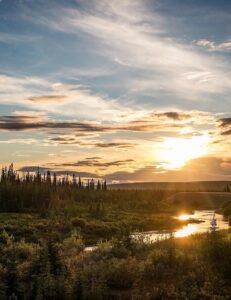
Kobuk Valley National Park is a 1.7 million-acre park in Arctic Alaska that encompasses a vast valley where the Baird and Waring Mountain ranges surround the middle segment of the Kobuk River. This semi-enclosed basin, 75 miles east of Kotzebue, preserves numerous unique geological features and lies on the Western Arctic caribou herd’s migratory path.
The Kobuk Valley is at the crossroads of the boreal forest and the treeless Arctic tundra that stretches westward to the Chukchi Sea. The boreal forest is open woodland with few trees in a layer of thick tundra at its northernmost point.
The Great Kobuk Sand Dunes, which comprise 25 square miles, the Little Kobuk Sand Dunes at Onion Portage, and the Hunt River Dunes occupy a large portion of the southern Kobuk Valley. These are the Arctic’s most fabulous active dunes. These wind-sculpted dunes reach up to 100 feet and are stabilized by the area’s flora. Despite 40 miles above the Arctic Circle, summer temperatures can reach 100 degrees. The dunes are accessible through a challenging hour-long climb down Kavet Creek from the Kobuk River.
How To Get There
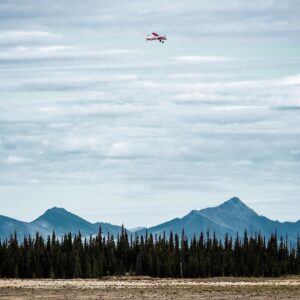
Kobuk Valley is not accessible by road. The majority of people fly in either Kotzebue or Bettles to get to the park. Regular flight service is provided throughout the summer from Anchorage to Kotzebue and Fairbanks to Bettles.
The park is only accessible by aircraft, snowmobile, or dogsled in the winter. While it’s one of the tougher national parks in Alaska to access, the views and activities are incredible.
What To Do
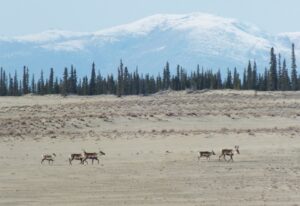
Kobuk River: The Kobuk River is a slow-moving river that provides incredible wilderness float trips through magnificent boreal woods surrounding animals. Boaters can reach the Salmon River’s headwaters by loading their boats from high mountain airstrips.
Wilderness Adventure: The finest wilderness trekking is done in the mountains, where there are more wide vistas and firmer footing than on the mushy lowland tundra. The Onion Portage and the Great Kobuk Sand Dunes, where the Western Arctic caribou herd crosses the Kobuk River twice a year, are popular camping and hiking destinations.
Flightseeing: Another excellent method to experience the park’s distinctive sights and fauna is flying above it. Flightseeing trips over the park are available from Kotzebue and Bettles, with the possibility to land in the area for up-close exploration.
Wildlife Viewing: The Western Arctic caribou herd, one of Alaska’s largest with roughly 200,000 animals, travels through the park from calving grounds north of the Brooks Range to winter grounds south of the range.
This 600-mile trek is one of the world’s last extensive animal migrations. Thousands of migrating birds, including arctic terns, swans, cranes, geese, and ducks, spend the summer months in the park. Moose, grizzly bears, wolves, wolverines, foxes, and porcupines are among the park’s other land wildlife.
Where To Stay
Within Kobuk Valley, there are no roads, campsites, or maintained trails. However, you can do backcountry camping here. The Onion Portage and the Great Kobuk Sand Dunes are popular backpacking destinations. The park’s information is available through the Northwest Arctic Heritage Center, Kotzebue.
While we personally think this is one of the best national parks in Alaska, don’t plan a trip lightly: you ned to know what you’re doing to survive.
When To Visit
The ideal time to visit Kobuk Valley National Park is during the summer. The days are long (the sun doesn’t set from roughly June 3 to July 9), and temperatures in many regions may reach the 80s or higher. The best time to see wildflowers is from mid-June until late July. The Kobuk River ice breaks up in May and starts to rebuild by mid-October.
2. Lake Clark National Park
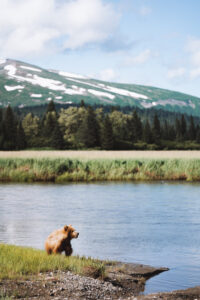
This park is an undiscovered gem, with gorgeous scenery, near access to Anchorage and Homer, and less than 20,000 people visiting each year.
Lake Clark National Park is about 100 miles southwest of Anchorage and has some of Alaska’s most beautiful scenery, including mountains, glaciers, granite spires, thunderous waterfalls, wave-washed beaches, and the state’s biggest lake.
The 5,625-square-mile park runs from the Cook Inlet coastlines to the tundra-covered highlands of Southwest Alaska, passing via the Chigmit Mountains. Lake Clark, a 42-mile-long turquoise body of water surrounded by mountains, is the park’s showpiece. Mount Iliamna, at 10,016 feet, and Mount Redoubt, at 10,197 feet, are active volcanoes that erupted in 1990, throwing ash to Anchorage, in the Chigmit Mountain, where the Alaska Range meets the Aleutian Range.
The valleys, lakes, and foothills on both sides of the Alps indicate glacially changed topography. The lowest areas of the park’s southwest region are covered with boreal forest, with white and black spruce accounting for the majority of the coniferous trees. Tundra dominates the farther north and west areas.
How To Get There
The only approach to get to Lake Clark is via a small charter plane from Anchorage, Kenai, or Homer, which takes about an hour. Small aircraft that fly guests into the park for day excursions land on lakes, gravel bars, or beaches where they can spend the day fishing or observing bears.
You can only reach the majority of isolated lodges by air taxi from Port Alsworth, located on Lake Clark’s south side.
What To Do
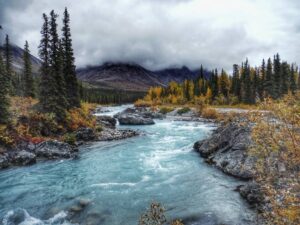
Bear Watching: Brown bears congregate along the shore, lakes, and streams to eat salmon and clams, making bear watching a highlight of Lake Clark National Park. Visitors can fly into the park on guided day trips from Anchorage, Kenai, and Homer to spend time seeing these beautiful creatures.
Canoeing and Kayaking: You will find some of the world’s most breathtaking water sports in Lake Clark National Park. Experience it firsthand by paddling a canoe or kayak on Lake Clark.
Wildlife Viewing: You can find a diverse range of subarctic fauna in Lake Clark. Some land animals include brown and black bears, moose, the more than 100,000-strong Mulchatna caribou herd, Dall sheep, and wolves. Also, you can witness harbor seals, beluga whales, Steller sea lions, and sea otters along the coastline.
Day Hikes: From Port Alsworth, you may take a leisurely walk through some of the most magnificent landscapes in Alaska.
Fishing: This world-class fishing destination is known for its abundant wild salmon and beautiful trout.
Where To Stay
For those searching for a pleasant multi-day vacation into the wilderness, Lake Clark boasts numerous isolated lodges accessible from Port Alsworth. There is one primary camping area and two public-use cabins on Lake Clark.
Priest Rock Public Use Cabin and Joe Thompson Public Use Cabin are the two public-use cabins that you can reserve.
The Farm Lodge, Chulitna Lodge, Redoubt Lodge, and the Silver Salmon Creek Lodge are just a few Lake Clark hotels and lodges.
When To Visit
Early summer is the perfect time to visit Lake Clark National Park to enjoy the sun and beautiful weather. However, many people claim that the park is gorgeous in August, with many visitors flocking to the park to take in its natural beauty.
Obviously, this is one of the most rural national parks in Alaska, so you should only visit if you’re ok with roughing it.
1. Denali National Park
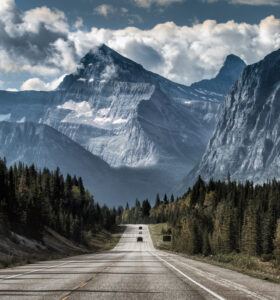
This world-famous national park is known for its pristine landscapes, spectacular wildlife, and the towering Denali.
Denali National Park encompasses 160 miles of the Alaska Range, featuring granite spires and snowy peaks occasionally buried in clouds. North America’s tallest mountain dominates the skyline.
Denali rises magnificently to 20,310 feet, making it one of Alaska’s most awe-inspiring spectacles. Around 400,000 adventurous visitors visit Denali National Park every year, mostly between late May and early September.
The Eielson Visitor Center is Denali National Park’s newest and most spectacular interpretive center. The 7,400-square-foot structure has natural history exhibits, a giant Denali model, and panoramic views of North America’s highest mountain.
How To Get There
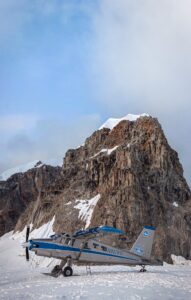
The Parks Highway provides easy access to the park’s entrance (120 miles south of Fairbanks; 235 from Anchorage). It’s one of the easier national parks in Alaska to access, which is one of the reasons it’s so popular. There are many ways to get to Denali!
What To Do
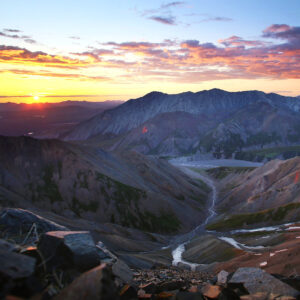
Bus Tour: Ride the bus deep into the park to look at America’s last frontier.
Bike Tour: Rent a bike and pedal it beyond where the private automobiles can go witnessing all of the park’s amazing beauties in the open air.
Hike the Savage Alpine Trail: To test your mettle, we suggest a hike up the Savage Alpine Trail, which is 8 kilometers round trip and gains 1500 feet in altitude. This trek is often cited as one of the park’s best and is accessible through the Savage River area.
Wildlife: In addition to the beautiful golden eagle, the park is home to 37 other animal species, including lynx and marmots. On the other hand, most tourists are interested in seeing Alaska’s “Big Five” animals: moose, caribou, wolf, Dall sheep, and brown, or grizzly, bear. Grizzlies are the most common bears observed by park visitors along Park Road. Black bears live in Denali’s forested areas, whereas grizzly bears prefer the tundra’s open expanses.
You don’t need to be a traveler to witness this wildlife—people who never sleep in a tent have a fantastic opportunity to get a close look at these beautiful species grazing free in their native environment, unlike most wild places in the nation.
Camping: Take the bus to a tent and spend the night in Alaska’s premier national park on a bucket list trip.
Where To Stay
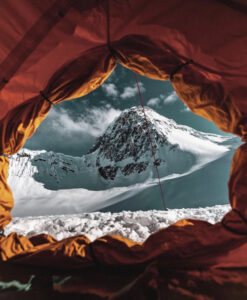
Denali National Park has six constructed campsites accessible from the park’s main road.
Denali campsites do not need reservations in advance. However, reservations are recommended since space may be limited. Denali is definitely one of Alaska’s most popular national parks.
The campgrounds accessible to tourists are Riley Creek, Savage River, Sanctuary River, Teklanika River, Igloo Creek, and Lake Campground.
Except for Riley Creek, all campsites are only available during the summer. Those who dare can camp for free in the winter.
While Denali National Park lacks official park lodges, there are plenty of fantastic lodging options, most of which are expensive.
Most visitors choose to remain outside the park; however, there are four choices on privately owned property inside the park’s limits. You’ll find skyline Lodge, Kantishna Roadhouse, Camp Denali, and Denali Backcountry Lodge at the end of the park’s main road. We recommend reserving your accommodations as early as possible since they tend to sell out well in advance.
When To Visit
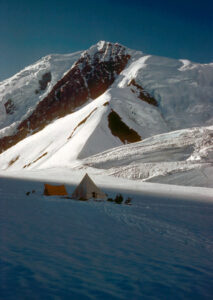
Summer is the greatest time to visit Denali National Park because of the longer days and milder temperatures. The longer, brighter summer days are perfect for those who want to glimpse the big mountain’s summit. As a result, the weather prevents most tourists to this Alaskan national park from seeing Denali’s pinnacle.
August is the best month to visit Denali since it has fewer insects and nicer weather than July. In Denali National Park, the month of August has the best sunshine.
Things To Know Before Visiting an Alaska National Park
Have Bear Spray: Grizzly bear encounters in Alaska National Parks are significantly more likely than in parks in the lower 48 states, so bring bear spray. Even if you don’t need bear spray 99 percent of the time, it’s better to be safe than sorry.
Bring Insect Repellent: Alaska is notorious for its craziness when it comes to mosquitoes. Insect repellent is a must-have for everyone visiting coastal parks, regardless of the season or time of year. Mosquito net hats, trousers, and top covers are more options.
Verify If You Can Bring Your Dog: Dogs aren’t permitted on the trails in many national parks because their presence might harm the natural environment. Before bringing your pup to the park, double-check to see whether they’re allowed where automobiles are.
Protect Living Trees and Plants: Instead of securing your tarp to a tree, use tent stakes to hold it to the ground.
Keep Your Distance From Wildlife: Keep a safe distance from animals and allow them the right of way. Camping near denning sites, food caches, and alder or birch thickets is not recommended.
Leave Natural and Cultural Items Where You Find Them: All of Alaska’s parks and preserves have a rich human history, and evidence of these civilizations can be discovered all around the state. Read the rules for locating natural and cultural things in each park before going.
